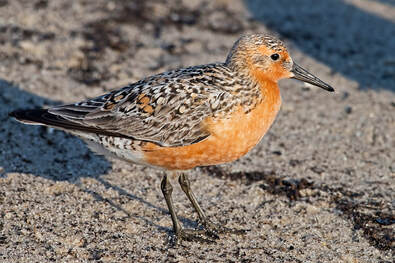 Red Knot photo by Brian Kushner, Audubon Photography Awards. Red Knot photo by Brian Kushner, Audubon Photography Awards. by Dottie Head, Director of Membership and Communications The Red Knot is a rufous-breasted, robin-sized bird that makes one of the world’s most epic migratory journeys, travelling nearly 9,000 miles from the southern to northern hemispheres each spring then turning around and doing it all over again each fall. Occurring on all continents except Antarctica, Red Knots travel from High Arctic nesting areas to wintering locations in South America, Africa, and Australia. There are three sub-species of Red Knots found in North America and all three are in decline. Listed as threatened under the Endangered Species Act, the rufa subspecies migrates along the eastern U.S. coast. Their migration is perfectly timed to coincide with the egg laying of the horseshoe crab. Arriving between April and May, the Red Knots pause their journey to gorge on horseshoe crab eggs and replenish energy stores. A single Red Knot needs to eat roughly 400,000 eggs during stopover to complete migration. More than 30 percent of the population of rufa Red Knots visits the Georgia Coast each year. Based on a band re-sighting study, the stopover population of rufa red Knot on southward migration has been estimated at 23,400 birds, while up to 13,775 birds have been documented using the area on northward migration, according to the Western Hemisphere Shorebird Reserve Network. Like many birds, Red Knots were decimated by market hunting in the 1800s. Passage of the Migratory Bird Treaty Act in 1918 ended the slaughter, but in recent decades populations of Red Knots from the eastern North America have declined sharply due to unsustainable harvest of horseshoe crabs, coastal development, and sea level rise induced by a changing climate. Between 1980 and 2000, rufa Red Knot numbers have declined by nearly 75 percent making these birds a flagship species for shorebird conservation. “Red Knots demonstrate the true magic of avian migration, traveling from end-to-end across the Earth,” says Adam Betuel, director of conservation. “They rely on a healthy coastline, plentiful horseshoe crab eggs, predictable climate, and few beach disturbances—all of which are in short supply along the Atlantic Coastline. Georgia is blessed with an amazing habitat and a network of organizations working to preserve and improve habitat for this threatened species, but there is much work to be done.” According to the American Bird Conservancy, humans harvest horseshoe crabs for fertilizer, livestock feed, and for its rare, blue blood, which is sensitive to endotoxins and used to test human drugs and medical devices for contamination. Beginning in the 1980s, people began to harvest horseshoe crabs in unsustainable numbers for conch and eel bait, which fueled steep declines of both horseshoe crabs and Red Knots. Other migrating shorebirds that feed on horseshoe crab eggs, including the Ruddy Turnstone, Semipalmated Sandpiper, and Dunlin. “The horseshoe crab, more than 450 million years old, is one of Earth’s oldest animals. It survived the cataclysms of the planet’s mass extinctions, including one where 96 percent of sea life perished. And now, we are drawing down its time, and the time of many shorebirds, dependent on horseshoe crab eggs, whose numbers are also plummeting. Ending the killing of hundreds of thousands of horseshoe crabs for bait every year, and substantially reducing the hundreds of thousands bled annually for medical testing, are critical steps to enabling birds of “untrammeled wildness and freedom” to fly freely once again,” writes Deborah Cramer in a recent article in Orion Magazine. Deborah is the author of the award-winning book The Narrow Edge: A Tiny Bird, an Ancient Crab, and an Epic Journey, and was the keynote speaker at the Atlanta Bird Fest closing celebration in 2016. In Georgia, Red Knots have two distinct wintering strategies. One population travels from breeding grounds in the high Arctic to winter in southern Argentina and Chile, stopping over in Georgia to feed before continuing its migratory journey. A second group breeds in the high Arctic but will spend the winter months along the southeastern coast, from Virginia down to South America. Along its range, including Georgia, biologists are working to gain a better understanding of this species by studying arrival times, stopover duration, and estimating populations. You will often see Red Knots on Georgia beaches and mudflats from September to May with their medium-sized beaks to the ground searching for horseshoe crab eggs, bivalves, and small crabs. They are easy to recognize in the rufous-red breeding plumage with a plumb, football-like shape. Immature birds and non-breeding birds are a non-descript gray and white and can easily blend in with other shorebirds. In the coming year, Georgia Audubon plans to hire a coastal biologist to work closely with existing staff from the Department of Natural Resources and Manomet to expand research capabilities and advocate for policies that protect horseshoe crabs and Red Knots. “Georgia’s 100 mile coastline is unique in its shape, tides, and relative intactness compared to other places along the Atlantic Coast and is a critical habitat for many bird species, including the Red Knot,” says Betuel. “The reliance of the rufa Red Knot on our beaches and marshes highlights the work that we must do to make our coast welcoming to these birds. Georgia Audubon is excited to do our part along the Georgia Coast and add capacity to the amazing work that is already taking place.”
2 Comments
Luis Indacochea
8/23/2020 09:39:28 am
Please share the scientific name whenever possible so that I can use that for conversations with friends in the Southern Hemisphere. Articles without use of this name lose a tiny bit of value when shared with folks in other countries as they have to go through extra effort to find the bird on their literature and hope that it is still the same species.
Reply
Your comment will be posted after it is approved.
Leave a Reply. |
AuthorBirds Georgia is building places where birds and people thrive. Archives
April 2024
Categories |

 RSS Feed
RSS Feed

